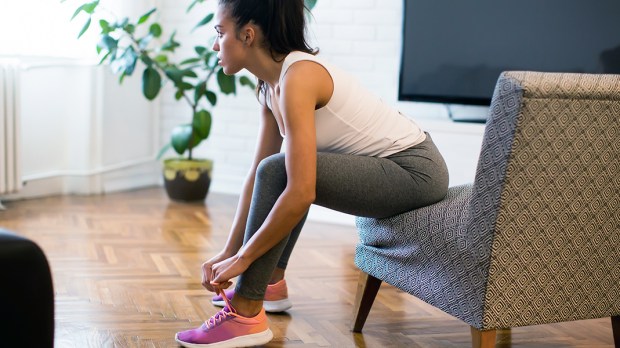Lenten Campaign 2025
This content is free of charge, as are all our articles.
Support us with a donation that is tax-deductible and enable us to continue to reach millions of readers.
In my profession, I have a lot of clients with lower back pain. Ninety-eight percent of the time, that low back pain is caused by the muscles of the lower back compensating to make up for weak abdominal muscles. This matters because while chronic pain may be a cross we must carry, oftentimes it’s something we can heal and overcome. And when we are healthier and more fit, we have more energy to do what we are called to do in our lives.
Most people think they know how to strengthen their stomach muscles, and they usually assume it’s an endless combination of sit-ups, crunches, and bicycles. Unfortunately, those exercises might build the individual muscles being used, but they won’t strengthen your core as a whole unless you do them correctly–and most people don’t do them correctly.
The “core” is the powerhouse of the body. A strong core allows you do develop full range of motion and prevents injury both during exercise and daily, functional movements. Whether you’re swinging your toddler into the air or kneeling in church, you should always have your core engaged and your abdomen braced. But because so many of us spend our time sitting, we allow these muscles to disengage and lose the natural tendency to brace. The first step in building a strong core (and a strong body) is to practice abdominal bracing–anywhere, anytime, until you do it unconsciously everywhere, all the time.
What do I mean by abdominal bracing, though? It was “invented” (though really just rediscovered and described) by Dr. Stuart McGill, a professor of spinal biomechanics at the University of Waterloo. Here’s a simple explanation of how to do abdominal bracing properly:
Put your hands on either side of your stomach and take a deep abdominal breath, making sure that your belly expands as you breathe in. Hold your breath while slightly tightenting your abdominal muscles. You should feel your belly flatten out and your glutes tighten slightly as well. Then exhale while keeping this tension. You should be able to breathe in and out normally while still mantainin this same slight tension in your belly without much mental or physical effort at all.
This is a different exercise than transverse abdominal activation, which requires a total hollowing of the core and is difficult to maintain. While focusing on the transverse abs is vital for women recovering from childbirth, abdominal bracing is necessary for everyone–and it’s easy enough to maintain at all times.
Yes, you read that right. This is something you should be doing during every single waking moment. In fact, for millenia humans naturally maintained this bracing motion–it’s an integral part of our biomechanics. It wasn’t until the advent of chairs and the drastic shift in our lives from active to sedentary that we lost the natural instinct for abdominal bracing…and along with it, healthy posture. The slumped-shoulder, arched-low-back posture most of us walk around with daily is actually terrible for our bodies and is a major cause the rise in back problems and spinal surgeries.
That said, attempting to maintain abdominal bracing at all times after years of neglecting this technique can seem daunting, which is why I recommend dedicating specific times during daily routines to practice abdominal bracing. Doing dishes or folding laundry (while standing!) are great times to think about bracing your abdomen. Kneeling for prayers is another good time, as the extra demand on the core from kneeling naturally increases the benefits from abdominal bracing. Once you’re able to maintain this relatively easily while walking and doing various daily tasks, level up by bracing when you’re in the car, or sitting on the couch. Try to develop a good mind-body connection so that you’re gradually constantly aware of your body, your posture, and your core stability.
This isn’t just a wacky fitness thing for serious athletes. Our bodies are integral to who we are, and an hour of exercise doesn’t make up for neglecting them for the rest of the day. Just as we should always be aware of our spiritual state of being, so we should also be constantly aware of our physical state of being. Think of abdominal bracing as a way to keep your body healthy and safe from injury, in the same way that saying the rosary in the car and during the workday can become a way to constantly keep your soul healthy and safe from sin.

Read more:
How to pray while you exercise

Read more:
3 Quick exercises to build into your day when you’re too busy to work out

